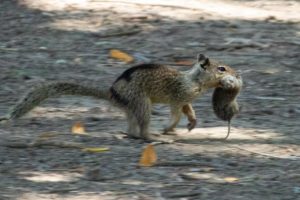Researchers have found direct evidence of the consumption of dairy products in the Pyrenees during the earliest phase of the Neolithic.
Analysis of the content and use of prehistoric vessels has become a valuable source of information about the dietary patterns and subsistence practices of past societies. The new research, carried out on materials from the Huesca (Spain) sites of the Cueva de Chaves (in the municipality of Bastarás), at 640 meters of altitude in the pre-Pyrenean mountains, and the Espluga de la Puyascada (in the municipality of La Fueva ), at 1,300 meters, in a strictly Pyrenean environment, has now revealed the first direct evidence of consumption and processing of dairy products in the Pyrenees during the ancient Neolithic.
The work has been carried out by prehistorians from the Autonomous University of Barcelona and the University of Zaragoza and chemists from the University of Strasbourg (France) on materials deposited in the Museum of Huesca.
The research has been carried out through a combination of techniques for the identification of organic residues and the isotopic characterization of fatty acids to determine their animal origin, as well as data obtained from the morphology and functionality of the ceramics and from archaeozoological studies of both. sites.
The analysis of the organic residues preserved in the clay matrix inside 36 ceramic containers indicates that 7,500 years ago dairy products were already processed and consumed in the Central Pyrenees. The correlation between milk fat residues and the different forms of pottery further suggests that all processes (preparation, consumption and storage) were carried out in both settlements.
The result “questions the previous consideration that dairy consumption in the Pyrenees would have started much later,” says Nàdia Tarifa, researcher at the University of Strasbourg during the research and first author of the study. «It has always been considered that prehistoric social dynamics in mountainous contexts are slower or “less evolved” than on the coast. Our work definitively corroborates previous faunal studies in both sites, which had already pointed out dairy exploitation in these mountainous areas in very early phases of the Neolithic.
Ceramic remains from the Espluga de Puyascada (La Fueva, Huesca) analyzed in the study. (Image: R. Laborda. CC BY-ND)
The study also shows how pig products could have been processed or stored in ceramic containers at both sites, which would indicate the importance of this species for the first mountain livestock economies. In contrast to the results for milk, the researchers have also observed some variations between the two sites in terms of the exploitation of ruminant meat and pigs, with a predominance of the former in the Espluga de la Puyascada and the latter in the Cueva of Chaves. These differences could be related to the characteristics of the settlements and their environment and to meat processing methods.
Researchers have also identified residues of processed vegetables, as well as pine resin. This last substance would have been used to waterproof the interior of the containers.
The results support the idea that in the early Neolithic in the Pyrenean area a mixed economy was practiced based on integrated agriculture and livestock (in which one supports the other), with flocks of sheep as the main source of meat and milk. .
«Our findings allow us to better understand the consumption habits and technological use of resources in the ancient Neolithic in the Pyrenees and open new avenues of research to deepen the understanding of the social and economic dynamics of ancient societies, especially in the areas mountainous,” says Alejandro Sierra, UAB researcher and co-author of the study.
The study is titled «Milk production in pottery. Evidence for various exploited resources used by the first farmers in Central Pyrenees using the morphological, chemical and stable carbon isotopic composition of organic residues from ceramic vessels. And it has been published in the academic journal Archaeological and Anthropological Sciences. (Source: UAB)





![[Img #74678]](https://thelatestnews.world/wp-content/uploads/2024/12/See-schizophrenia-and-bipolar-disorder-in-face-shape-150x150.jpg)





![[Img #72842]](https://thelatestnews.world/wp-content/uploads/2024/06/Dairy-products-were-processed-and-consumed-much-earlier-than-believed.jpg)
![[Img #74678]](https://thelatestnews.world/wp-content/uploads/2024/12/See-schizophrenia-and-bipolar-disorder-in-face-shape-300x200.jpg)


Add Comment